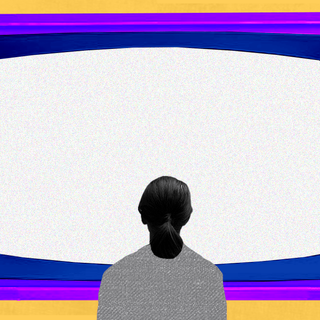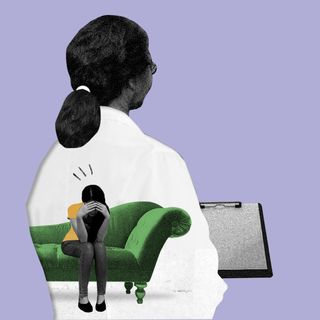
Song ‘1‑800‑273‑8255’ May Have Helped Save Lives From Suicide: US Study
The findings represent the “Papageno effect,” in which mass media plays a constructive role in preventing suicides.

“I’ve been on the low, I been taking my time/ I feel like I’m out of my mind/ It feel like my life ain’t mine,” form the first words of the song “1-800-273-8255” by Logic, released in 2017.
The summer of 2017 was a grim one. “There was something about mental health and pain and suffering in that moment that demanded to be recognized,” rapper Logic said in an interview, referring to the trauma of a Donald Trump presidency, along with other cultural simmerings. His song “1-800-273-8255,” which titled the number for the U.S. National Suicide Prevention Lifeline, may have beena link to suicide reduction among young teens, according to new research.
The peer-reviewed study, published in the BMJ on Monday, identifies a 5.5% reduction in suicides among 10-to-19-year-olds during three different intervals between 2017 and 2019. Previous research noted the suicide prevention lifeline received nearly 10,000 additional calls right after Logic performed the song in 2017. It is important to note this is not direct causation, but an association between the potential impact the song may have had on the bigger culture.
“The present study shows for the first time that if help-seeking and recovery from severe crisis is prominently featured in the media, this can have a positive effect of increasing help-seeking and reducing suicide,” said study author Thomas Niederkrotenthaler, an associate professor in the department of social and preventive medicine at the Medical University of Vienna.
The song’s trajectory falls on a rising curve: it starts with describing Logic’s suicidal distress, switches to speaking to a counselor he contacts through Lifeline who validates his experiences, and offers hope. The last few lines describe Logic’s renewed perspective on life and his motivation to stay alive. The first chorus’ “I don’t wanna be alive” changes to someone on the other end of the phone, saying: “I want you to be alive … now let me tell you why.”
In particular, rapper Logic’s personal history with depression lent credibility to the song. “[It] certainly makes his message more authentic, and helps suicidal people identify with the lyrics more strongly,” Alexandra Pitman, an associate professor in the University College of London’s Division of Psychiatry, who was not involved in the study, told CNN. There remains limited scientific literature about the positive impact of celebrity messages about battling suicidal feelings have successfully could have a positive effect,
“I never made my music to inspire anyone but myself. I made my music to pull myself out of a dark place. Every lyric I ever wrote, I was always talking to an audience of one,” Logic told GQ in 2017.
Related on The Swaddle:
70% of Calls to India’s First National Mental Health Helpline Were From Men
Moreover, the degree of influence any artist or celebrity has determines the intensity with which people associate with the messaging. “Celebrities but also noncelebrities can have an important role in suicide prevention if they communicate about how they have coped with crisis situations and suicidal ideation,” said Niederkrotenthaler. Concurring with this, Alexandra Pitman, associate professor in psychiatry, who was not involved in the study, added that it enhanced “the extent to which people feel drawn to him and his message,” he wrote in an accompanying editorial. Pitman called it “a song of hope.”
The research falls on the intersection of mental health and pop culture, and how authentic messaging can help in suicide prevention.
There are two theories that deal with how suicide is talked about. The “Werther effect,” also called the “copycat” syndrome is famous for outlining the deleterious consequences of media reporting on suicide. The name was inspired by Johann Wolfgang von Goethe’s 1774 book The Sorrows of Young Werther. In the book, Werther takes his life due to an unrequited love; in the coming months, the area where the book was published reported a spate of suicides.
The effect is well documented globally. “People can commit suicides by any means, but the recent trend of suicides by jumping into the river [is] a copycat mechanism where people mimic previous suicides when those suicides get a lot of media coverage,” Dr. Yasir Rather, a noted psychiatrist and professor at the Institute of Mental Health & Neurosciences (IMHANS) in Srinagar, told The Swaddle. He emphasized that media houses should exercise caution when publicizing these suicides.
Related on The Swaddle:
Tell Me More: Talking Mental Health Policy and Media Reportage With Dr. Soumitra Pathare
The impact of how mass media, like songs, shows, or television, influence mental health actions, was best recorded through the show 13 Reasons Why. In 2019, researchers foundthe show’s graphic description of the protagonist killing herself was linked to 58 additional deaths in teenagers. Plus, in the nine months following the show’s release, there were 195 more teen suicide deaths than the expected average, according to a statement.
What may have minimized the Werther effect in the song’s case was not reporting on the suicide method or even trying to articulate the “reason” for suicide. The impact of the song may have been different due to the addition of the Lifeline number in the headline; even though the digits never reflect in the song, the song still presented an alternative approach to suicide prevention.
This is what’s called the “Papageno effect.” It is the “influence that mass media [news, social media, movies, TV] can have by responsibly reporting on suicide and presenting non-suicide alternatives to crises,” according to the Suicide Prevention Lifeline. In other words, the way suicides are reported could have either a positive or negative effect on the individual’s decision. “Research continues to show that reports on suicide – in the media, self-disclosure, viral posts, etc. – can have a profoundly positive impact and save lives, provided that the reports are done in a responsible manner,” a blog noted. The name is taken from Mozart’s opera “The Magic Flute,” where a person contemplating suicide is reminded of the desire for living by three people.
The idea is to address the stigma around mental health without glorifying or idolizing it. It’s a thin line to straddle, but an important one.
In the end, the song offers a message of hope. “The lane I travel feels alone / but I’m moving ’til my legs give out / and I see my tears melt in the snow / but I don’t wanna cry / I don’t wanna cry anymore / I wanna feel alive / I don’t even wanna die anymore.”
If you or anyone you know is anxious, depressed, upset, or needs to talk, please refer to this list and this resource of affordable and accessible mental health professionals.
If you are feeling suicidal or having suicidal thoughts, please reach out to 9820466726 helpline run by Aasra.
Saumya Kalia is an Associate Editor at The Swaddle. Her journalism and writing explore issues of social justice, digital sub-cultures, media ecosystem, literature, and memory as they cut across socio-cultural periods. You can reach her at @Saumya_Kalia.
Related


How I Have Sex: ‘I Worry the Other Person May Get Infected [With HIV] Because of Me’
